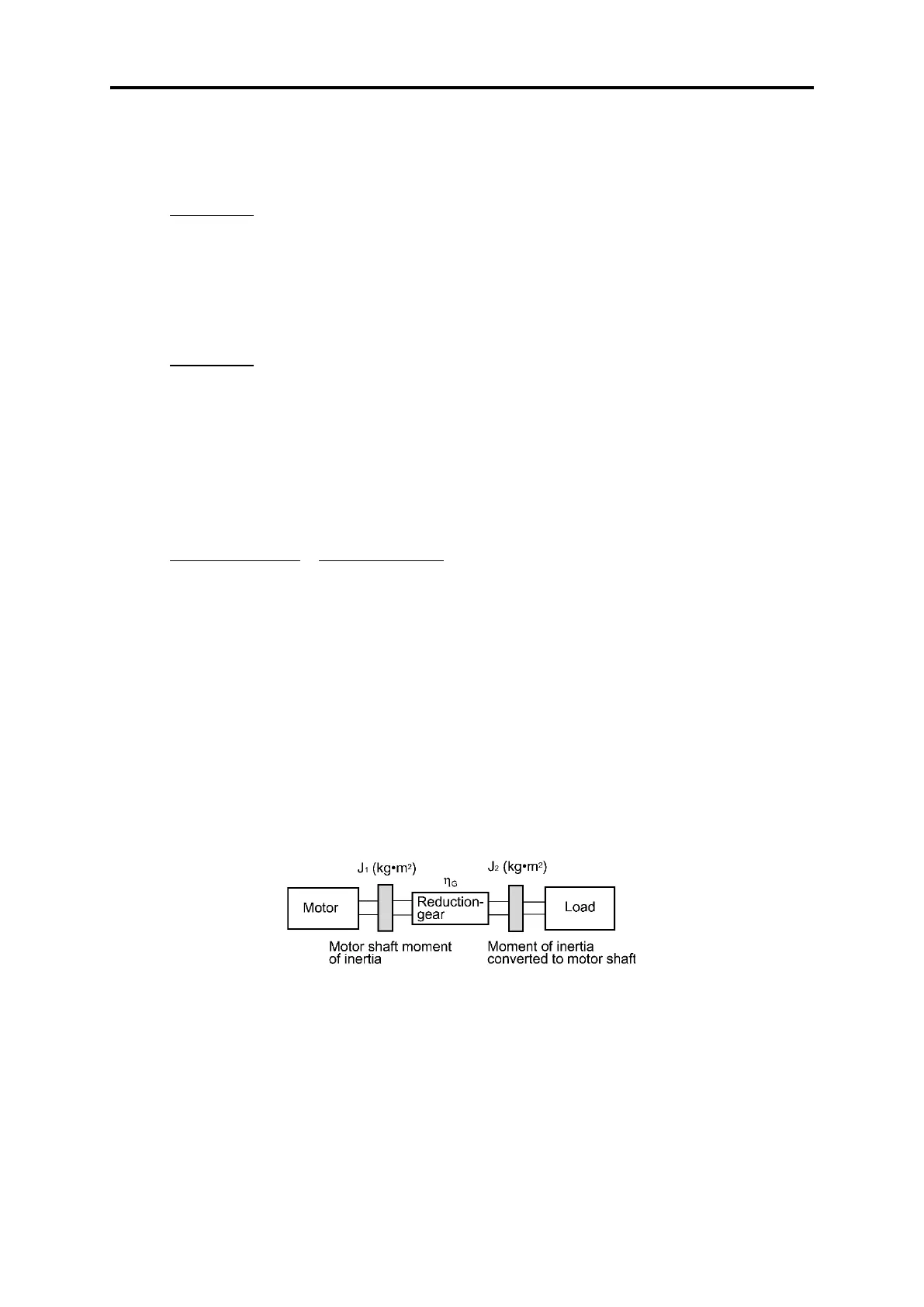10.3 Equations for Selections
10-10
(3) For a load running horizontally
Assume a carrier table driven by a motor as shown in Fig. 10.3-1. If the table speed is (m/s) when the motor
speed is N
M
(r/min), then an equivalent distance from the shaft is equal to 60· / (2·N
M
) (m). The moment of
inertia of the table and load to the shaft is calculated as follows ((Equation 10.3-13):
(4) For a vertical or inclined lift load
The moment of inertia J (kg·m
2
) of the loads connected with a rope as shown in Fig. 10.3-2 and Fig. 10.3-3 is
calculated with the following equation ((Equation 10.3-14) using the mass of all moving objects, although the
motion directions of those loads are different.
[ 2 ] Calculation of the acceleration time
Fig. 10.3-5 shows a general load model. Assume that a motor drives a load via a reduction-gear with efficiency
G
. The time required to accelerate this load in stop state to a speed of N
M
(r/min) is calculated with the following
equation ((Equation 10.3-15):
where,
J
1
: Motor shaft moment of inertia (kg·m
2
)
J
2
: Load shaft moment of inertia converted to motor shaft (kg·m
2
)
M
: Minimum motor output torque in driving motor (N·m)
L
: Maximum load torque converted to motor shaft (N·m)
G
: Reduction-gear efficiency
As clarified in the above equation, the equivalent moment of inertia becomes (J
1
+J
2
/
G
) by considering the
reduction-gear efficiency.
Fig. 10.3-5 Load model including reduction-gear

